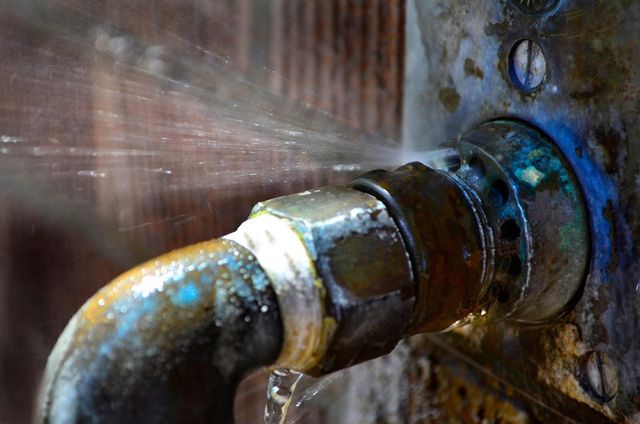6 Ways to Discover Concealed Water Leakages in Your Home
6 Ways to Discover Concealed Water Leakages in Your Home
Blog Article
This post which follows relating to Finding hidden leaks is incredibly compelling. Don't overlook it.

Early detection of leaking water lines can minimize a possible disaster. Some little water leakages may not be visible.
1. Check Out the Water Meter
Every home has a water meter. Examining it is a surefire way that helps you find leaks. For starters, shut off all the water sources. Make certain nobody will certainly purge, utilize the faucet, shower, run the washing device or dish washer. From there, go to the meter as well as watch if it will certainly transform. Because no one is utilizing it, there must be no movements. If it relocates, that suggests a fast-moving leak. Likewise, if you spot no changes, wait an hour or 2 and also inspect back once more. This implies you may have a slow leakage that might even be underground.
2. Examine Water Usage
If you spot abrupt changes, in spite of your intake being the very same, it means that you have leaks in your plumbing system. An unexpected spike in your bill shows a fast-moving leak.
On the other hand, a consistent rise monthly, despite the exact same routines, shows you have a slow-moving leak that's also slowly rising. Call a plumber to thoroughly examine your residential or commercial property, particularly if you really feel a warm location on your flooring with piping underneath.
3. Do a Food Coloring Examination
When it comes to water consumption, 30% comes from commodes. If the color in some way infiltrates your dish throughout that time without flushing, there's a leak in between the container and bowl.
4. Asses Exterior Lines
Don't fail to remember to check your outdoor water lines as well. Examination faucets by attaching a garden tube. Needs to water permeate out of the link, you have a loose rubber gasket. Replace this and also make sure all links are tight. If you've got a lawn sprinkler, it will assist get it skillfully took a look at as well as preserved yearly. One tiny leak can throw away lots of water as well as surge your water costs.
5. Check and also Examine the Situation
House owners ought to make it a behavior to check under the sink counters as well as even inside cabinets for any type of bad odor or mold and mildew development. These two red flags suggest a leakage so prompt interest is called for. Doing routine examinations, even bi-annually, can conserve you from a significant problem.
Check for stainings as well as weakening as the majority of pipelines as well as devices have a life span. If you believe leaking water lines in your plumbing system, do not wait for it to escalate.
Early discovery of dripping water lines can alleviate a possible disaster. Some little water leaks might not be visible. Examining it is a proven means that assists you find leaks. One tiny leak can waste loads of water and also increase your water costs.
If you suspect dripping water lines in your plumbing system, don't wait for it to intensify.
WARNING SIGNS OF WATER LEAKAGE BEHIND THE WALL
PERSISTENT MUSTY ODORS
As water slowly drips from a leaky pipe inside the wall, flooring and sheetrock stay damp and develop an odor similar to wet cardboard. It generates a musty smell that can help you find hidden leaks.
MOLD IN UNUSUAL AREAS
Mold usually grows in wet areas like kitchens, baths and laundry rooms. If you spot the stuff on walls or baseboards in other rooms of the house, it’s a good indicator of undetected water leaks.
STAINS THAT GROW
When mold thrives around a leaky pipe, it sometimes takes hold on the inside surface of the affected wall. A growing stain on otherwise clean sheetrock is often your sign of a hidden plumbing problem.
PEELING OR BUBBLING WALLPAPER / PAINT
This clue is easy to miss in rooms that don’t get much use. When you see wallpaper separating along seams or paint bubbling or flaking off the wall, blame sheetrock that stays wet because of an undetected leak.
BUCKLED CEILINGS AND STAINED FLOORS
If ceilings or floors in bathrooms, kitchens or laundry areas develop structural problems, don’t rule out constant damp inside the walls. Wet sheetrock can affect adjacent framing, flooring and ceilings.
https://www.servicemasterbyzaba.com/blog/how-to-detect-water-leakage-in-walls/

Do you appreciate more info about Top leak detection hacks? Write a comment down below. We will be interested to find out your opinion about this blog. We hope that you visit us again later on. In case you enjoyed our blog post if you please be sure to pass it around. Kudos for your time. Visit again soon.
Report this page